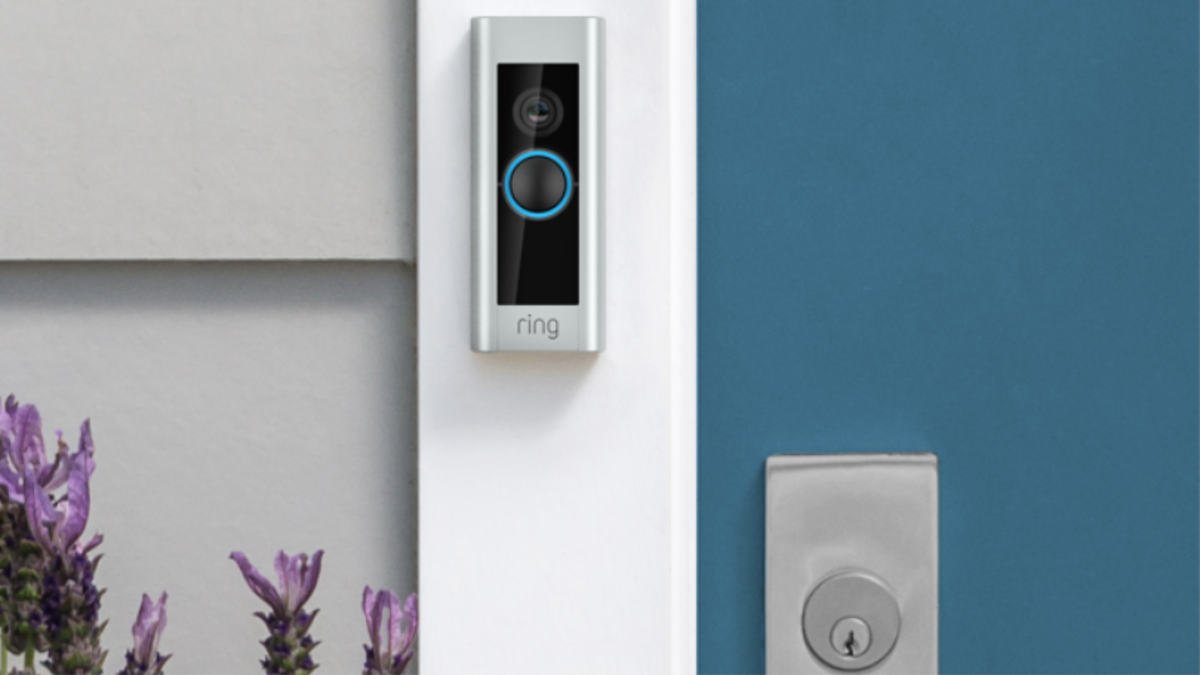
How can you protect your home security camera from hackers? Kim Komando has the answers. (Ring)
Here’s a sad reality: The tech we use to protect ourselves can be used against us. An internet-connected security camera alerts you to real-life threats, but it can give hackers a digital route into your home, too.
The results can be horrifying. Tap or click for the chilling story of a hacker who harassed a young girl through her family’s Nest camera.
Enterprising cybercriminals can use anything from a malicious download to a laser pointer to break into your devices. Tap or click here to find out how a cheap piece of equipment can easily breach your smart home’s defenses.
Luckily, securing your connected cameras isn’t difficult once you know what to do. Step one? Let’s lock down your accounts.
1. Take care of the basics
Creating and remembering complex passwords is a pain, but there’s no getting around it anymore. Do I even need to tell you to stop choosing passwords that are easy to guess?
Here are a few rules of thumb. Don’t use:
- Your name, the name of someone in your immediate family or a pet’s name
- Your birthday, anniversary or house number — even if you don’t live there anymore
- The street you grew up on, your mother’s maiden name or anything else hackers might be able to guess or find in a data breach
Tap or click here for 5 simple rules for creating tough-to-crack passwords. Pro tip: A password manager is a great solution if you don’t want to deal with remembering them all.
Once you’ve created a solid password for your security system, video doorbell or camera, resolve to use it for that account and that account only. If you reuse the same login information, hackers only need to breach one site and they’ll have access to all of your accounts.
TECH TIPS, THE EASY WAY: Get my trusted tech advice and digital lifestyle tips straight to your inbox with free email newsletters. Choose the topics you care about and stay in the know. Tap or click here to sign up.
2. Enable an extra layer of protection
If offered, always set up two-factor authentication. Tap or click here for a crash course in 2FA. This second layer of protection is so effective, Ring recently made it mandatory. Google is expected to follow suit for Nest users starting this spring.
There are a few more settings to double check depending on the tech you use. Ring video doorbell users, tap or click here. Nest users, secure your settings by tapping or clicking here.
Beyond that, consider the bigger picture. How secure is your router? If you haven’t adjusted its settings recently, I bet you have a few to change.
Here are the must-do steps:
- Keep your software and firmware up to date
- Enable a firewall
- Turn off remote access
If it sounds overwhelming, don’t be discouraged. I’ll walk you through the process. Tap or click here to get step-by-step directions on how to secure your router.
3. Don’t neglect updates
Your router isn’t the only thing that requires the latest software. Be sure your camera, doorbell or security system is updated, too. This is as easy as connecting to the internet, checking for updates and hitting “install."
Check for updates on a regular basis. Mark your calendar, ask your smart assistant to set reminders or leave a note on the fridge. However, you remind yourself, just make sure to follow through when the time comes.
Keep an eye on the latest digital news, too. Hacks and breaches are all too common, and companies generally issue patches and updates after these events. Tap or click here to sign up for my Fraud & Security Alerts newsletter to stay in the know the easy way.
Now that you’ve taken important steps to secure your security cameras, you can rest easy. In fact, it may even be time to spring for some new smart home tech. Not sure where to start? Tap or click here to see which devices to start with.
BONUS TIP FOR EXTRA KNOW-HOW: 15 ways to fix Bluetooth pairing problems
Bluetooth is great for rocking out in the car or talking hands-free, but sometimes getting it to work makes you want to pull your hair out. There can be pairing problems, obscure error codes or completely unhelpful flashing lights — all very frustrating.
When you’re encountering pairing issues with your Bluetooth devices, don’t give in to the frustration.
Tap or click here to resolve annoying Bluetooth issues once and for all.
What digital lifestyle questions do you have? Call Kim’s national radio show and tap or click here to find it on your local radio station. You can listen to or watch The Kim Komando Show on your phone, tablet, television or computer. Or tap or click here for Kim’s free podcasts.
Copyright 2020, WestStar Multimedia Entertainment. All rights reserved.
Learn about all the latest technology on The Kim Komando Show, the nation's largest weekend radio talk show. Kim takes calls and dispenses advice on today's digital lifestyle, from smartphones and tablets to online privacy and data hacks. For her daily tips, free newsletters and more, visit her website at Komando.com.
